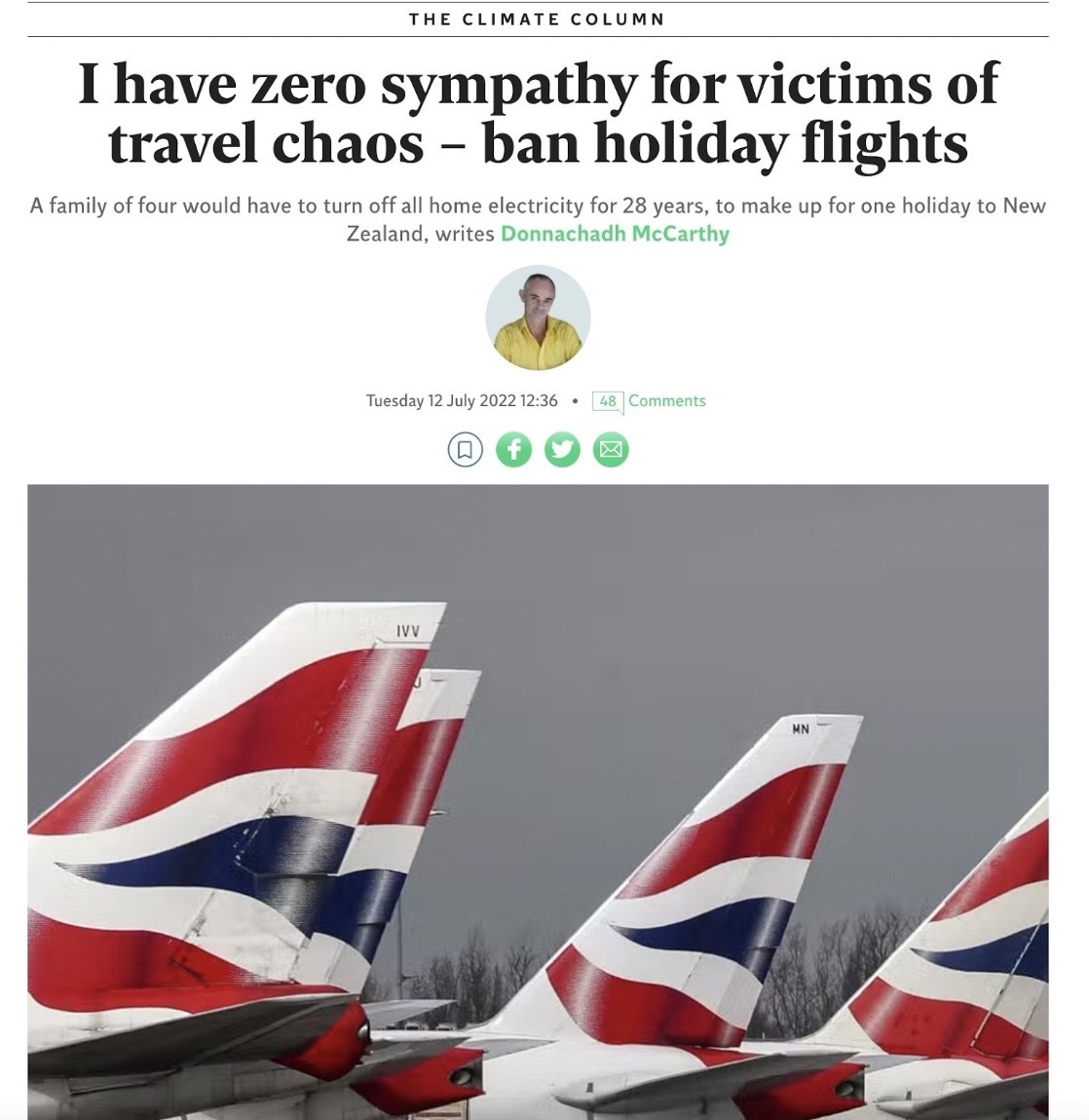On August 14th, a piece in The Hindu (newspaper) in India led with the following headline:: How do we make every Indian fly by our 100th independence day?
With India having just celebrated 75 years of independence, the author pointed out that only 3-4% of the population travel by air. He then said the country needs to “think big”, ending with the question, “how do we take the present 4 per cent who are flying to 50 per cent in the next two decades?”
In 2042, India’s population is expected to peak at 1.5 billion. In other words, the author wants 750 million people in India to fly.
Of course, why shouldn’t hundreds of millions more people in India benefit from air travel? But right now, few do, and this brings us to the core argument made by climate change groups.
Namely that the “aviation only contributes 2.6% of carbon emissions” soundbite is misleading, as it ignores the fact that most people right now don’t fly.
Leading on from that point, many climate change groups are saying something like this: The rich fly, and the poor pay via the impact of climate change. However, a growth in aviation will mean a growth in emissions. And so the issue to them is one of “climate justice”, where it should be the Global North that should be encouraged to change its behaviour.
In fact, even in the Global North, a small % account for most aviation emissions.
This was highlighted in a useful LinkedIn post by Herib Blanco from the International Renewable Energy Agency, who says that 10% of the flyers represent 30-50% of the total flights. In the US, 12% of the population takes 68% of the trips.
Blanco says these numbers are even more stark when you break it down by income. He says that in the European Union, “more than 40% of the total emissions for the top 1% (in terms of tCO2/capita) are from air travel.”
“Airport criminals” and “Carbon illiteracy”
Blanco concludes by saying that these stat
“Targeted measures” generally include reducing the demand for air travel. And here we generally see a spectrum of recommendations from think tanks, policy makers and climate groups. There are proposals to ban short haul air travel and encourage passengers to (where the infrastructure allows it) use rail.
Meanwhile an increasingly popular proposal is for a frequent flyer tax, where you are progressively taxed the more you fly.
Then there have been calls for airline advertising to be treated like tobacco and alcohol ads, because they both sell an aspirational lifestyle while (activists claim) damaging the environment (see a recent SimpliFlying newsletter).
And finally, there are calls to ban a lot of flying outright. Here for example is one particularly incidendary piece by Donnachadh McCarthy in the Independent newspaper (UK) calling for a ban on leisure flights and branding those of us who fly as “airport criminals” who suffer from “carbon illiteracy.”
McCarthy’s views are on the extreme end of the spectrum, but they do come back to the claim that flying is somehow selfish and done by the rich.
So what’s the answer?
That’s something for a much longer post and report but in summary, sustainability is a communications challenge, as well as a technical one. And so we need to emphasise the benefits of aviation to economies while also showing what airlines are doing to reach net zero.
Regional aircraft manufacturer ATR provides a particularly good example of how this should be done.
https://youtu.be/hI_qQvh5POs
At a Farnborough Air Show presentation last month, they showed how a 10% increase in flights to a regional airport also results in an increase in tourism, GDP and foreign direct investment. They did this while unveiling a goal for ATR aircraft to be certified to take 100% SAF in three years.
ATR has also in the past focused on communities in the Global South, for example in the Philippines, to show how air links can be transformative.
So to conclude, we need to be careful about using the “only 2%” statistic, it’s not the killer line many of us think it is. We need to be honest that, yes, we do want more people to fly, but that there are clear economic benefits for doing so, and we intend for that growth to be sustainable.
